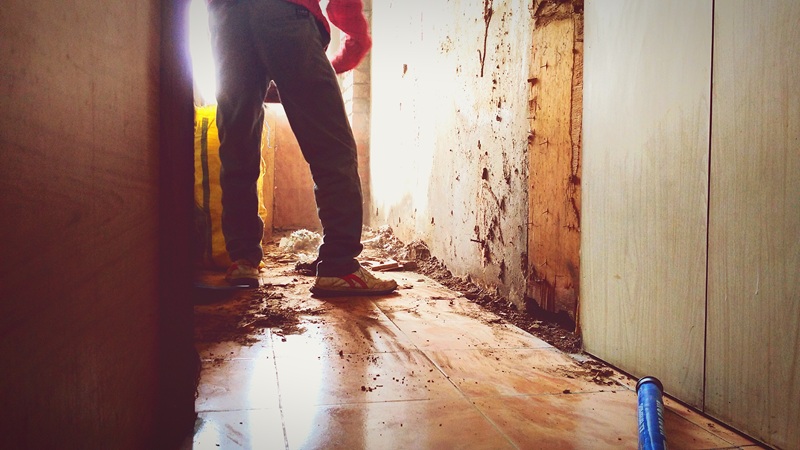In property sales, the most contentious issues rarely surface during negotiations — they emerge after transfer, when defects are discovered and expectations collide with reality. South African law draws a clear legal distinction between latent and patent defects, and that distinction often determines who carries the cost when problems arise.
For buyers, the concern is obvious: what happens if the property you just purchased turns out to have serious flaws you couldn’t have known about? For sellers, the risk lies in what was disclosed — or omitted. The law does not treat all defects equally, and the standard voetstoots clause doesn’t offer blanket protection when concealment is involved.
What Are Patent Defects in Property Law?
Patent defects are faults that are visible or reasonably detectable during a normal inspection. They include anything the buyer could have noticed without needing special knowledge or tools — such as broken windows, peeling paint, cracked tiles, or damaged fittings.
South African law places the responsibility on the buyer to inspect the property before signing. If a defect is obvious and the buyer fails to raise it, they generally can’t hold the seller liable later. This applies even if the sale includes a voetstoots clause — which simply reinforces that the buyer accepts the property in its current, visible state.
Importantly, the seller has no legal duty to point out patent defects. The assumption is that a reasonable buyer should see them. Unless the seller actively misleads or conceals something that would otherwise have been obvious, no legal claim can be made.

What Are Latent Defects in South African Property Law?
Latent defects are faults that are not visible and would not be picked up during a reasonable inspection. These include structural issues or system failures concealed behind finishes or surfaces — for example:
- Roof leaks not visible from inside or outside
- Rising damp hidden behind fresh paint
- Faulty plumbing or geysers
- Foundation movement or subsidence
- Illegal electrical wiring behind walls
What sets latent defects apart is that they’re often only discovered after transfer, when the buyer has already taken occupation. That’s when most post-sale disputes begin.
Sellers are not automatically liable for latent defects — but the law draws a line at knowledge and intent. If the seller knew about the defect and failed to disclose it, the voetstoots clause will not protect them. In that case, the buyer may be entitled to cancel the sale or claim damages, provided they can prove that the seller was aware and deliberately withheld the information.
Why the Voetstoots Clause Is So Often Misunderstood
The voetstoots clause has been part of South African property law for decades — yet it remains one of the most misunderstood provisions in residential sales.
Many sellers assume that once the clause is included, they’re fully protected against any defects that arise later. On the other side, buyers often believe that voetstoots is an unfair legal shield that blocks them from holding sellers accountable. Both views are incomplete — and both lead to unnecessary conflict.
Voetstoots does not override fraud, dishonesty, or concealment. If a seller knew about a latent defect and failed to disclose it, the clause will not protect them. But proving knowledge is difficult, and most buyers don’t realise the burden falls on them to establish not just the defect, but the seller’s awareness of it.
The reverse is also true: not every defect discovered after transfer creates legal grounds for a claim. If the issue is considered patent, or if the seller had no reasonable knowledge of it, the buyer is unlikely to succeed — even if the result is costly to repair.
This gap between what people think voetstoots means and what it actually protects is where most disputes begin. And once parties rely on assumptions instead of legal advice, the fallout tends to be expensive, emotional, and avoidable.
Can a Buyer Sue a Seller for Defects?
Yes — but not all defects give rise to a claim, and not all claims succeed.
In South African law, a buyer can sue a seller only if specific legal conditions are met. Most importantly, the buyer must prove:
- A latent defect exists;
- The seller knew about it at the time of sale; and
- The seller deliberately failed to disclose it.
This burden of proof lies with the buyer — and it’s often more difficult than expected. Suspicion alone is not enough. The buyer must produce evidence that the seller had actual knowledge of the defect and concealed it to complete the sale. This may come in the form of prior repair records, previous sale disclosures, WhatsApp messages, or even sworn testimony from contractors.
Claims for patent defects almost never succeed, unless the seller actively hid or disguised the problem — for example, painting over damp marks just before a viewing.
Where the buyer can prove all three elements, they may claim either:
- Rescission of the agreement (to undo the sale entirely); or
- Damages (to cover the cost of repair and related losses)
These cases often hinge on how the disclosure form was completed, whether the voetstoots clause applies, and whether a reasonable inspection would have picked up the issue.
Sellers relying on voetstoots should understand: if the court finds there was deliberate concealment, the clause falls away entirely.
VDM Attorneys – Conveyancing & Property Lawyers Sandton
Defect disputes don’t start at transfer — they start at signature. We advise buyers and sellers on how to structure property sales with clarity, enforceability, and legal foresight. From contract drafting to post-transfer claims, our focus is risk prevention and resolution grounded in law.
For sound legal guidance on latent or patent defects, consult VDM Attorneys before you commit.